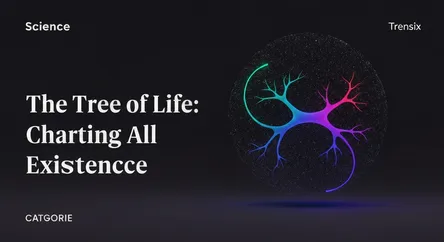Science
The Tree of Life: Charting All Existence

Explore the Tree of Life, the scientific model mapping the evolutionary relationships that connect every living organism on Earth.
What is it?
The Tree of Life is a powerful metaphor and scientific model that illustrates the evolutionary relationships among all organisms, both living and extinct. First famously conceptualized by Charles Darwin, it shows how all life on Earth is related and has descended from a common ancestor over billions of years. This branching diagram, known as a phylogenetic tree, maps out these connections. Modern science typically divides the tree into three main domains: Bacteria, Archaea, and Eukarya (which includes plants, fungi, and animals). The closer the branches between two species, the more closely they are related.
Why is it trending?
The Tree of Life remains a central concept in biology due to advancements in DNA analysis, which continuously refine our understanding of these relationships with greater accuracy than ever before. Scientists are compiling massive, open-source databases, like a "Wikipedia for evolutionary trees," to create a comprehensive map of all 2.3 million known species. This ongoing project has immense practical applications, driving new discoveries and keeping the concept relevant in various scientific fields.
How does it affect people?
Understanding the Tree of Life has significant real-world impacts. It acts as a predictive tool in medicine; for instance, it helps in developing new drugs by identifying related organisms that might produce valuable compounds. It is also crucial for tracking the evolution and spread of diseases like influenza and Ebola. In agriculture, it aids in improving crop yields and livestock. Furthermore, it guides conservation efforts by identifying biodiversity hotspots and species that are crucial to maintaining a healthy planet for human survival.